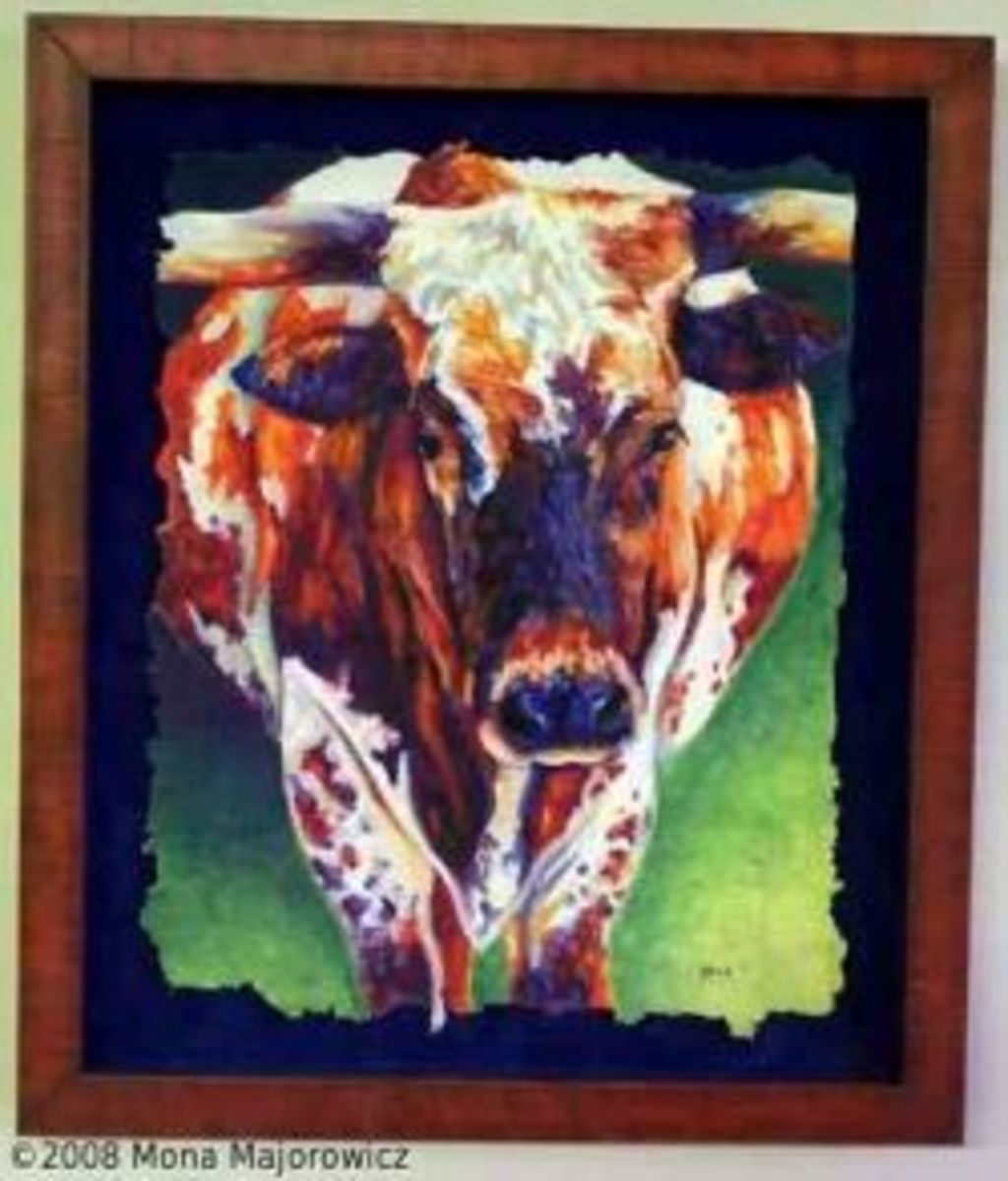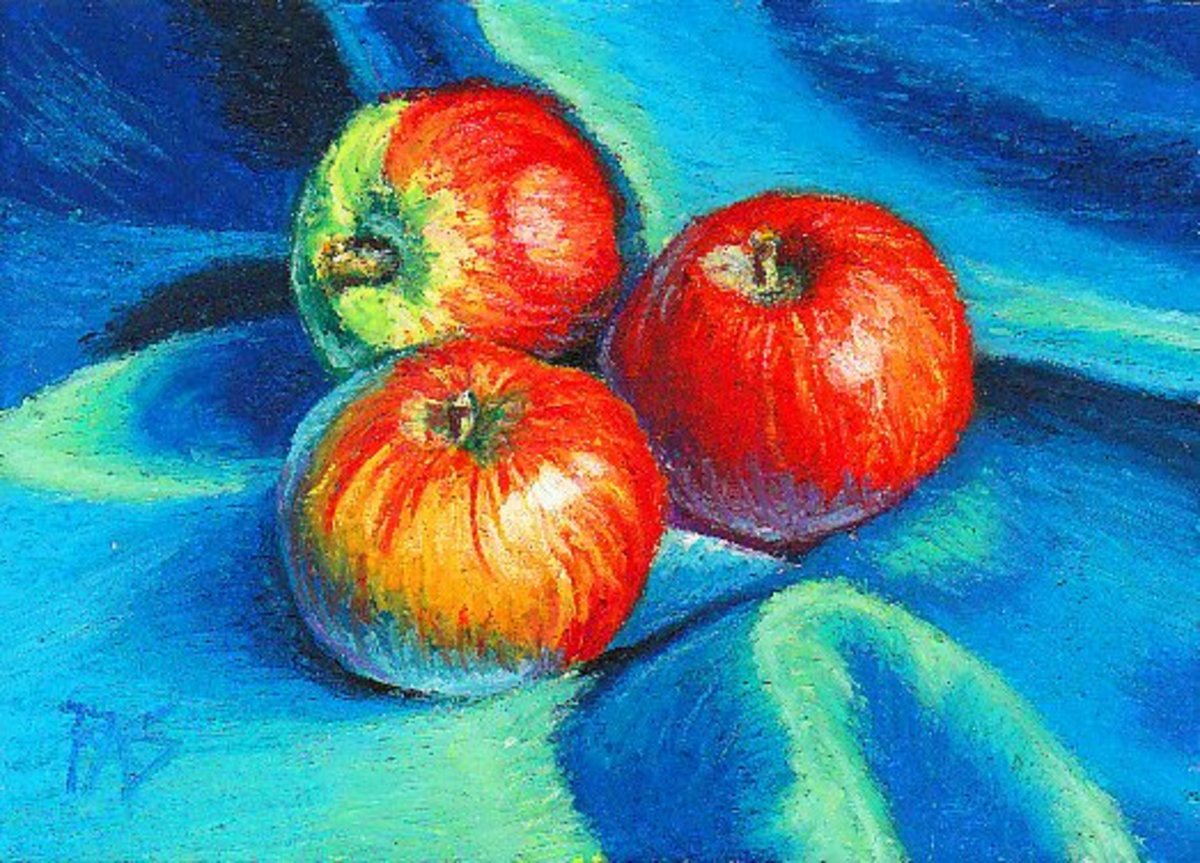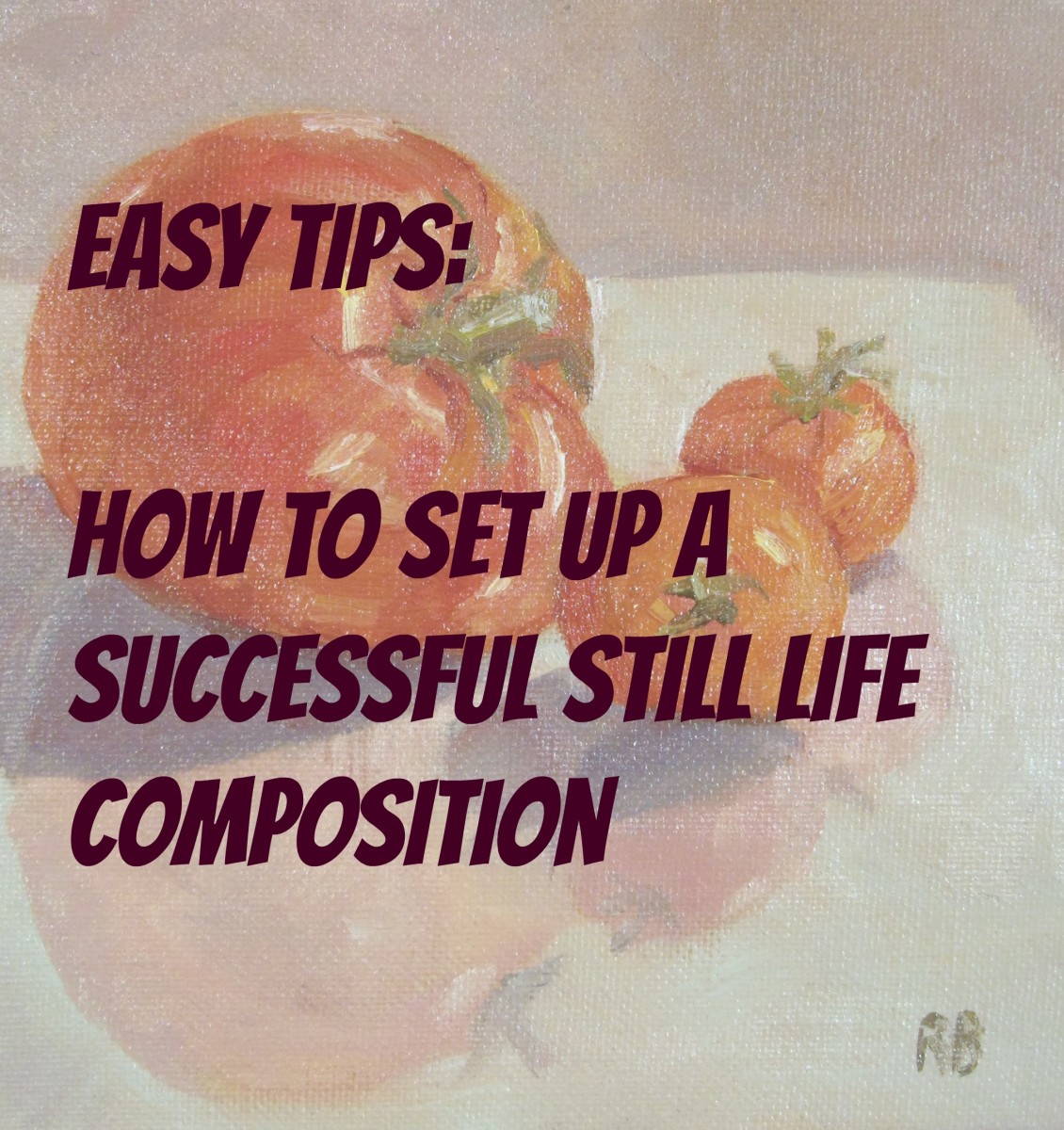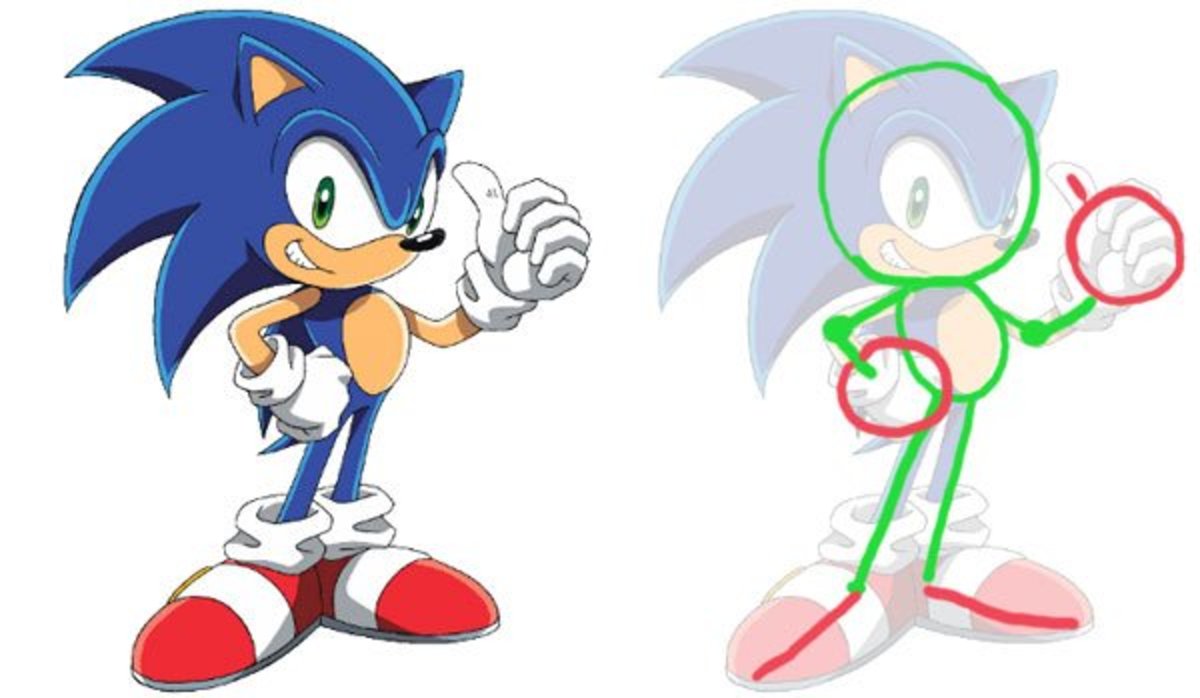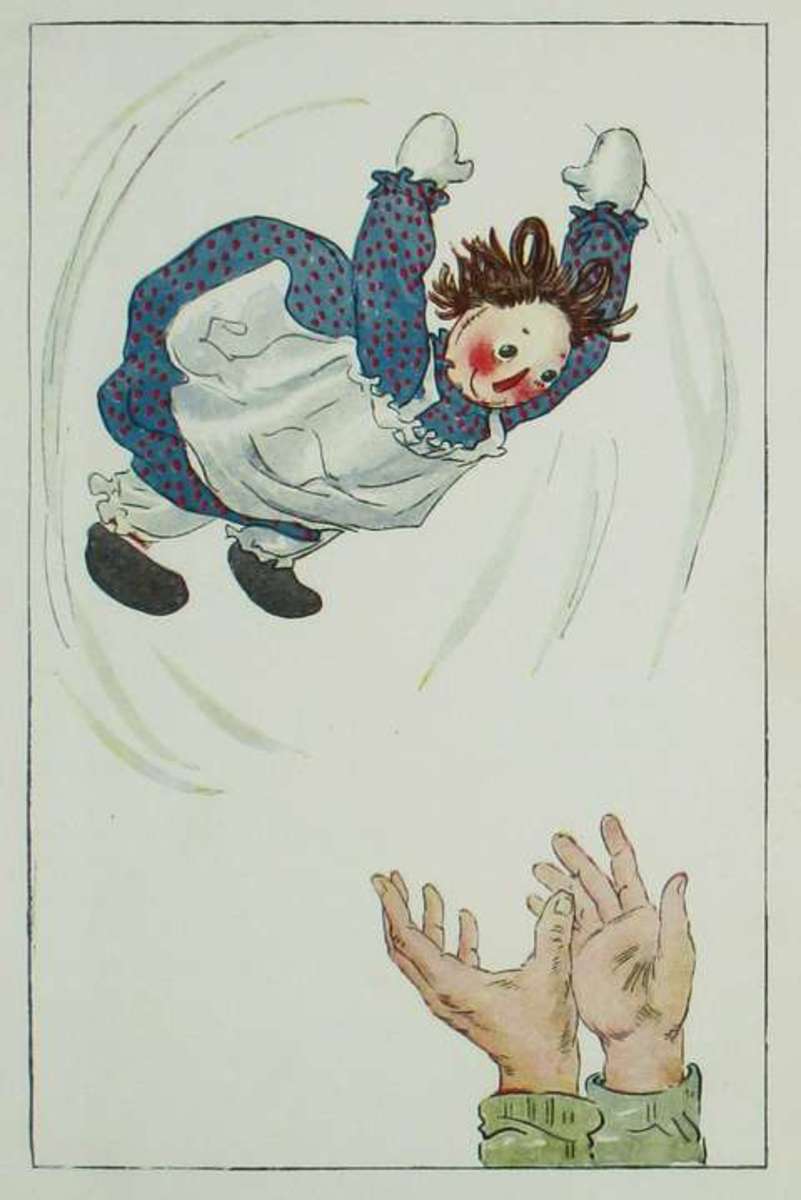Pastel Workshops - Composing a Painting
Snow Over Dartmoor
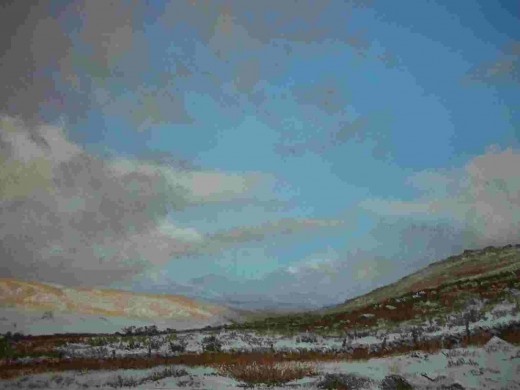
My previous article gave all the information needed to prepare for painting a pastel picture. This article takes things one stage further, teaching you how to get started. It's important to think hard about the composition of your painting before even putting pastel to paper, to avoid the disappointment of having to abandon a piece when you are part way through, and there are several factors to consider.
Painting light in pastels
Most of my work is completed in the studio. I visit the landscape I wish to paint, spending time there drinking in the atmosphere and taking several photographs. I generally use a couple of photos for reference when I'm back in the studio and the first thing I look at is where the light is coming from.
In this picture the light is hitting the clouds from above and the landscape is lit on the horizon. This means that clouds will have highlights at their tops, and that the rear of the painting will be brightly lit, whilst the rest will be muted, suggesting shadow.
Sometimes, I change the direction of the light to suit the composition better, but in this case there was no need.
Generally, when considering light, if the sun is fairly central in the painting, the sky is darker at the top edge and sides, paling towards the horizon, whereas the ground is paler towards the rear of the painting and stronger towards the foreground.
Study your piece closely and make sure that you know which way the shadows are falling. If you use more than one reference piece, make sure that shadows don't suddenly switch sides!
Book Your Pastel Workshop With Georgina
- Georgina Writes Stuff
Come and learn this vibrant, tactile medium in the workshop overlooking Dartmoor. Places limited to five per workshop, to allow individual tuition. Tea/coffee/biscuits/cake and all materials provided. Wear something old. See you there!
Using Colour in Pastel Paintings
Muted colours such as greys, lilacs and blue greys blend into the background, whilst stronger colours jump to the fore. In More Snow to Come, we don't want the foreground to out do the sunlit area on the horizon, so for this piece, it was important to keep the colours in the foreground muted and those in the sunlit area brighter. For this reason, I painted the foreground snow in a soft blue/grey rather than bright white, so suggest that it was in shadow. The foliage and wall showing through the snow was painted in a dull green/brown for the same reason.
In the mid ground, there are a few fields with hedges and shrubs, i kept these a soft grey, just to suggest that they are there, but not to detract from the main focus of the painting.
Eye Movement
When composing a piece it is important to lead the eye around a painting in a fairly circular movement, bringing the focus back to the important part of the composition. Strong vertical and horizontal lines distract the viewer, leading the eyes away from the main point of the painting. this can be used to advantage if the artist wants to make the viewer feel uncomfortable, but is generally to be avoided.
If you have a pastel painting that doesn't quite work and you're not sure why, it could be that your eyes don't know where to rest in the picture. In More Snow to Come, the contours of the Moorland and the clouds almost form a circular route, leading the eye back to the sunlit snow on the horizon.
For the same reason, paintings where the horizon forms a continuous straight line, as if drawn by a ruler are also very uncomfortable to look at. These are particularly common in seascapes, where the artist feels compelled to draw the horizon as a solid line. It is best to blur the line into the cloud or the sea, to draw the eye back into the painting.
Leave it Out
The final thing to consider before making a mark is what to leave in and what to leave out. If you're unsure, leave it out anyway until the painting is complete, then you can reassess. There is a tendency when starting out, to want to make an almost photographic representation of your subject, whereas most subjects benefit from a little judicial editing. Would the above painting have benefited from a line of telegraph poles, or electricity pylons? I think not.
The only thing to do next is to get started!

